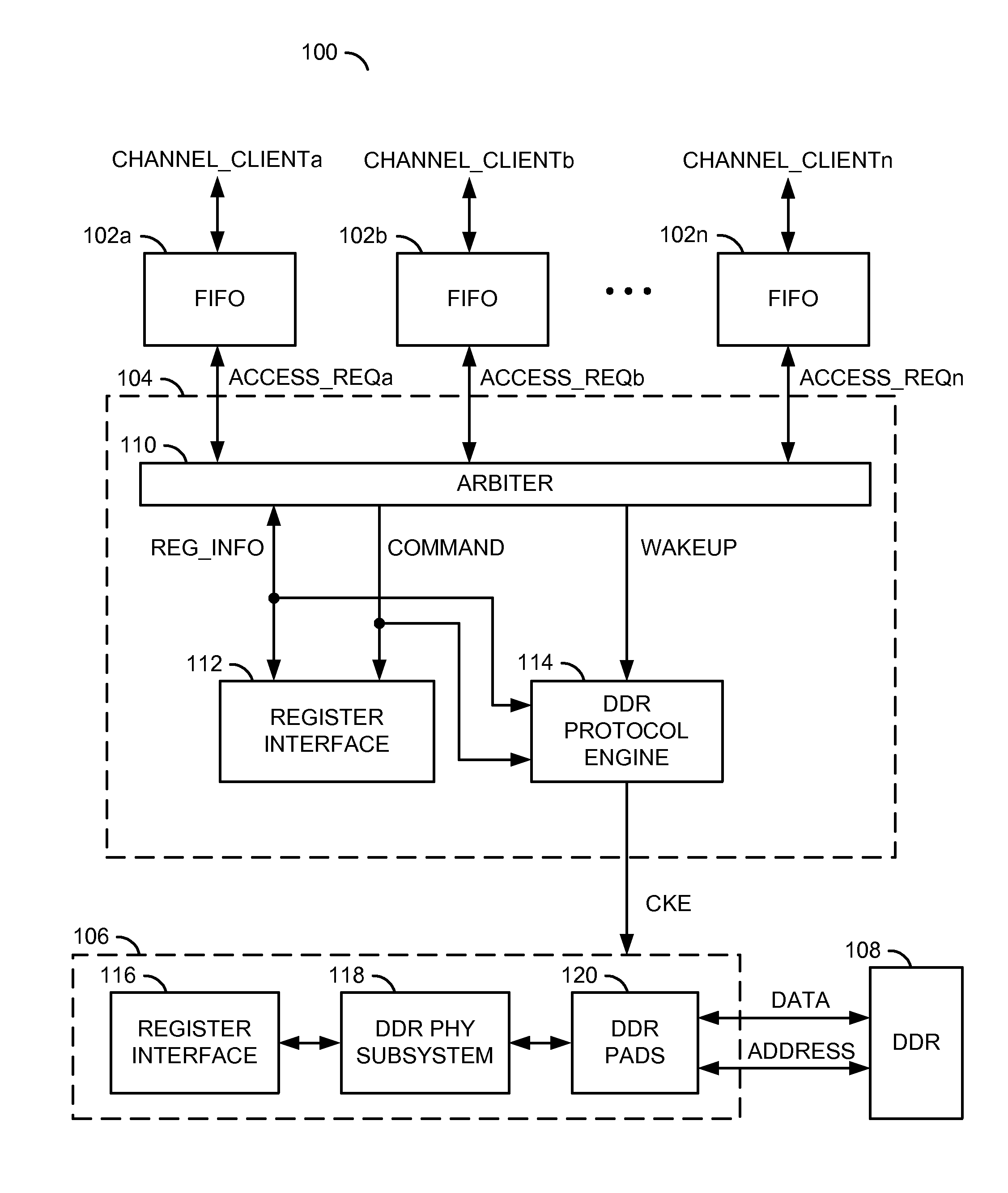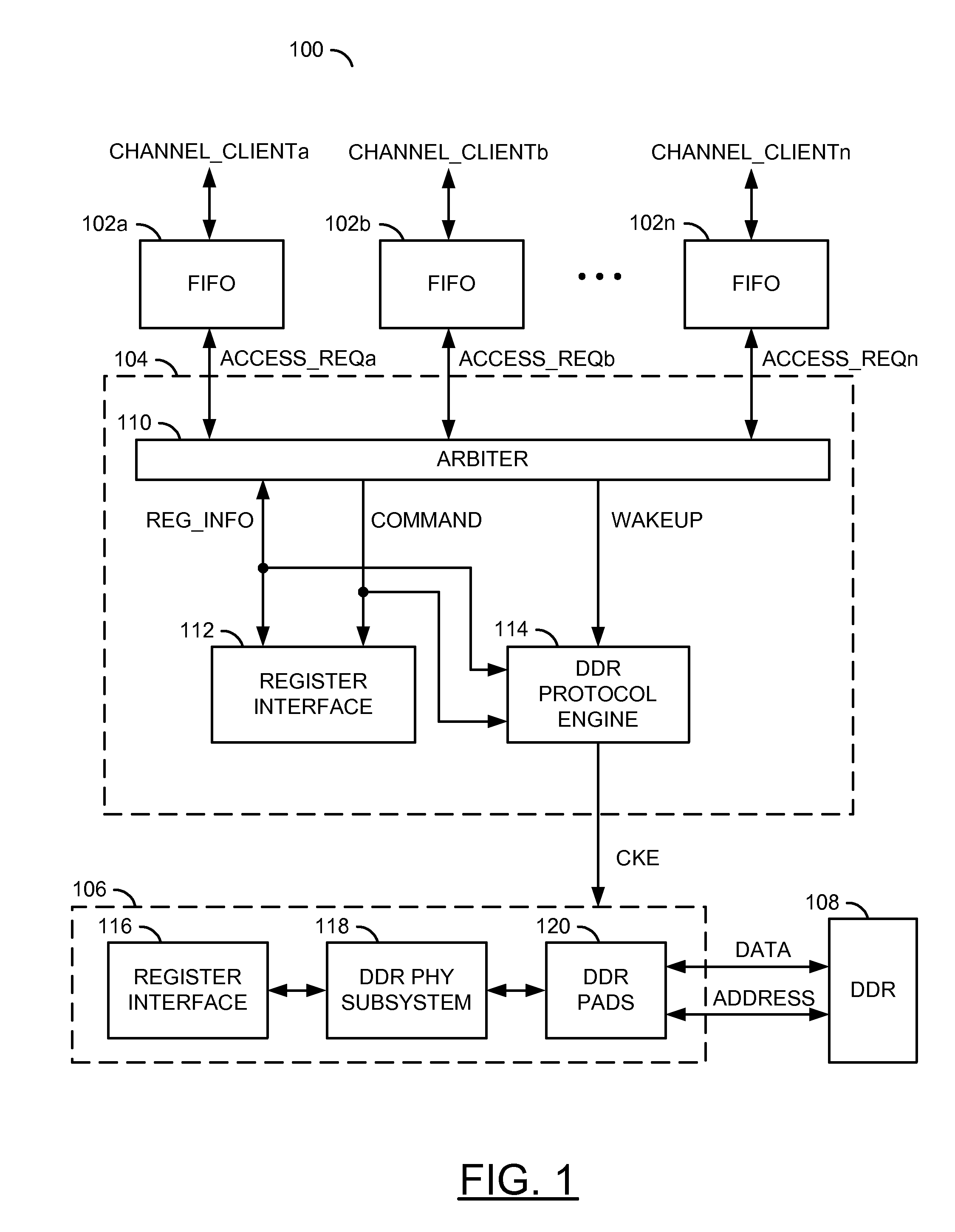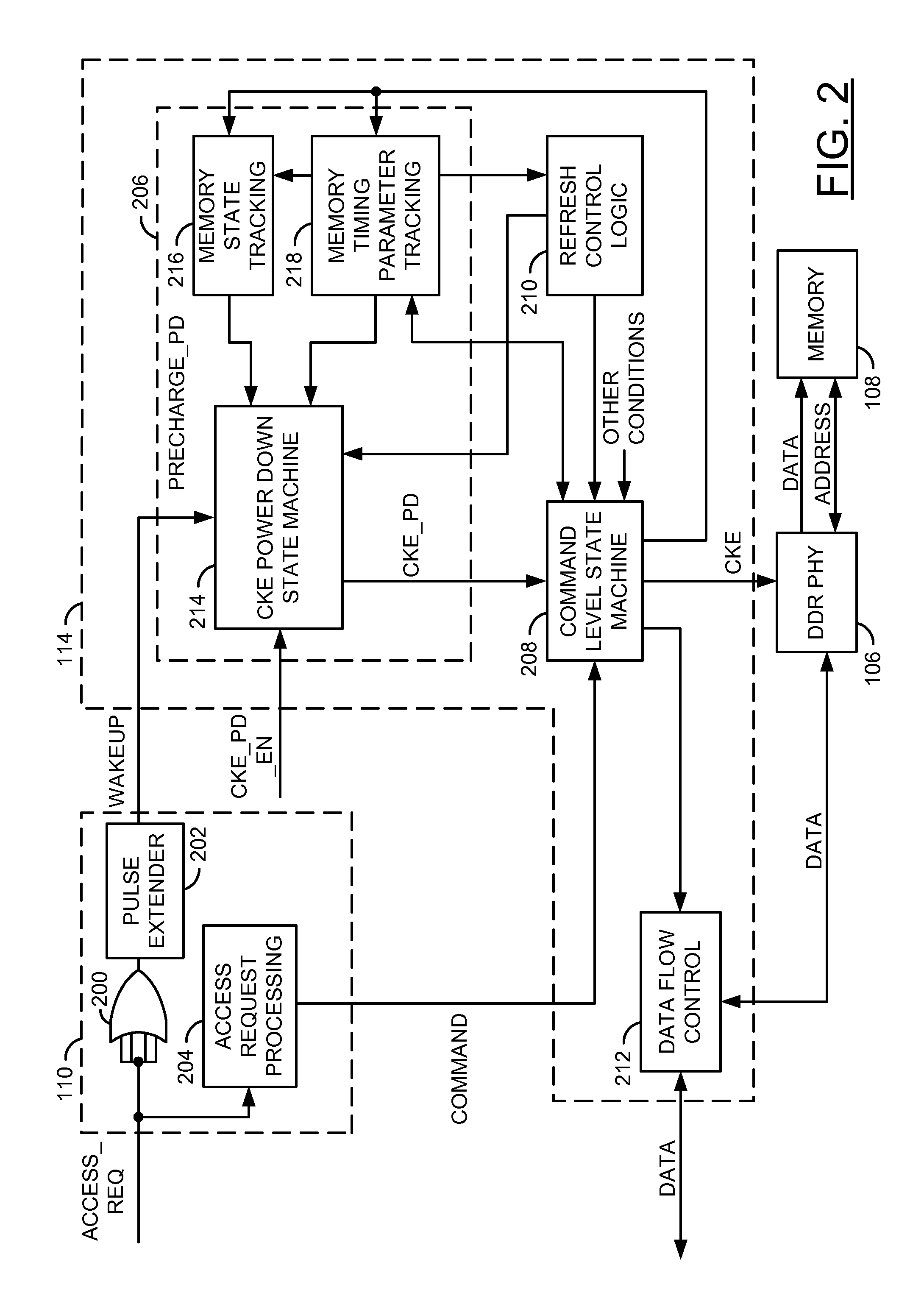Power savings and/or dynamic power management in a memory
a power management and memory technology, applied in the field of memory, can solve the problems of limiting the power management capabilities of firmware controlled implementations, insufficient capabilities of existing buffer controllers, and long-term, and achieve the effect of reducing overhead or minimizing overhead
- Summary
- Abstract
- Description
- Claims
- Application Information
AI Technical Summary
Benefits of technology
Problems solved by technology
Method used
Image
Examples
Embodiment Construction
[0018]Referring to FIG. 1, a block diagram of a system 100 is shown in accordance with a preferred embodiment of the present invention. The system 100 generally comprises a plurality of blocks (or circuits) 102a-102n, a block (or circuit) 104, a block (or circuit) 106 and a block (or circuit) 108. The circuits 102a-102n may be implemented as a buffer circuits. For example, the circuits 102a-102n may be implemented as First-In First-Out (FIFO) memory circuits. The circuit 104 may be implemented as a memory controller circuit. The circuit 106 may be implemented as a memory PHY interface circuit. In one example, the circuit 106 may be implemented as a DDR PHY interface circuit. The circuit 108 may be implemented as a memory circuit.
[0019]The circuit 104 generally comprises a block (or circuit) 110, a block (or circuit) 112 and a block (or circuit) 114. The circuit 110 may be implemented as an arbiter circuit. The circuit 112 may be implemented as a register interface circuit. The circu...
PUM
 Login to View More
Login to View More Abstract
Description
Claims
Application Information
 Login to View More
Login to View More - R&D
- Intellectual Property
- Life Sciences
- Materials
- Tech Scout
- Unparalleled Data Quality
- Higher Quality Content
- 60% Fewer Hallucinations
Browse by: Latest US Patents, China's latest patents, Technical Efficacy Thesaurus, Application Domain, Technology Topic, Popular Technical Reports.
© 2025 PatSnap. All rights reserved.Legal|Privacy policy|Modern Slavery Act Transparency Statement|Sitemap|About US| Contact US: help@patsnap.com



